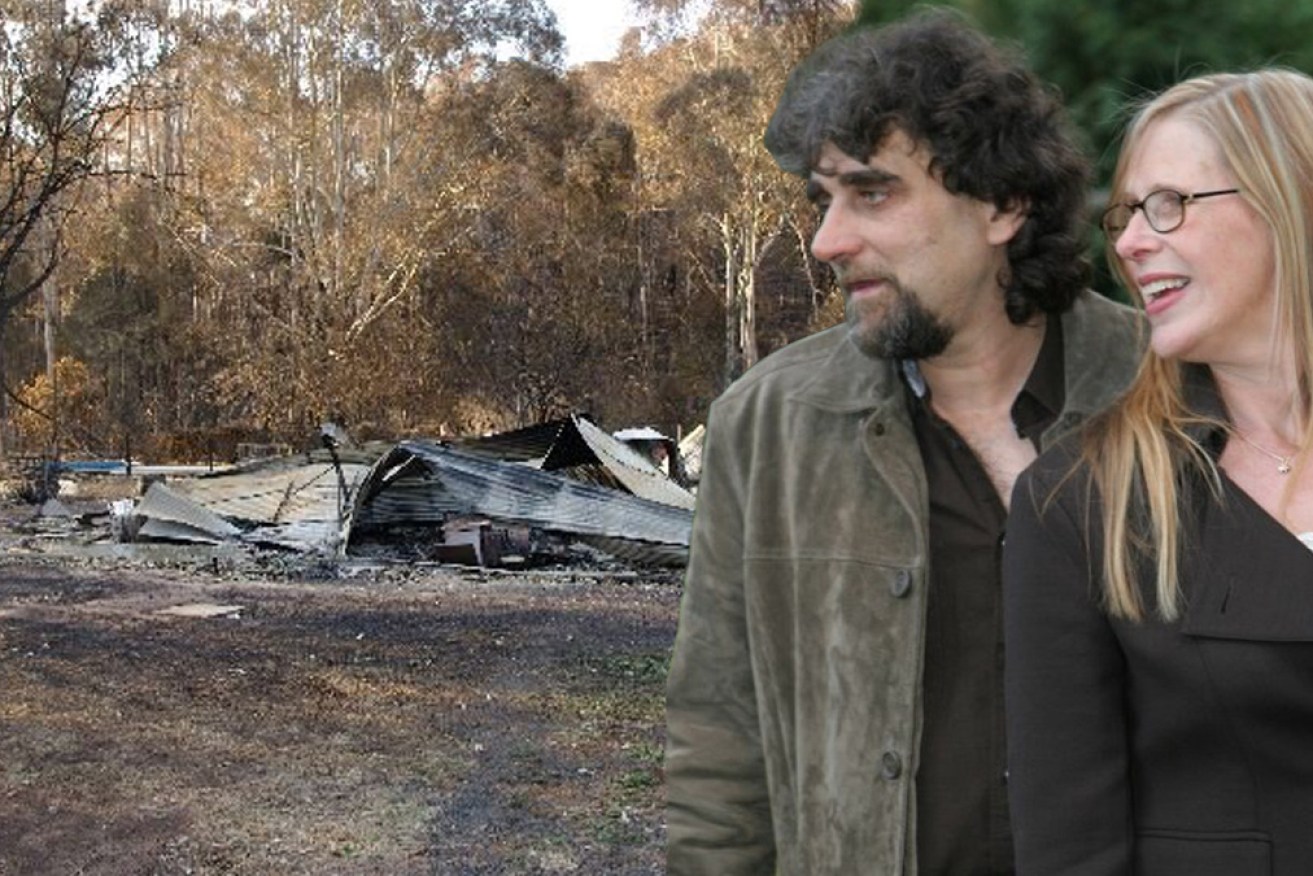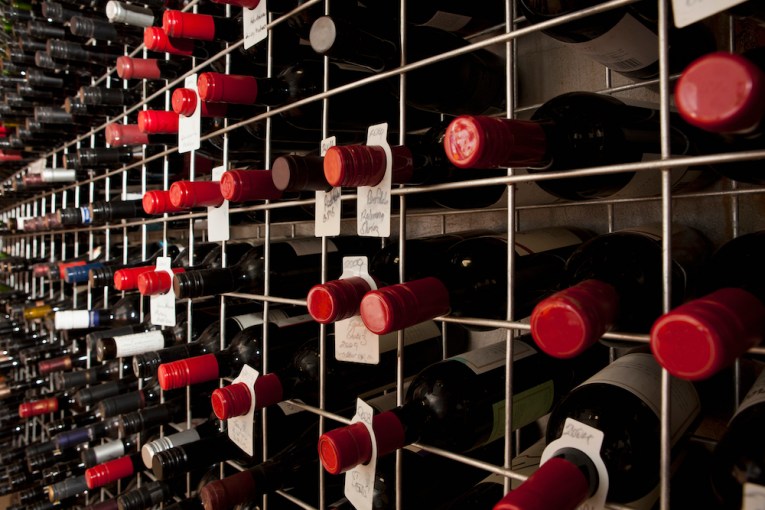Australian bushfires: Former victim opens up on rebuilding reality

Jane Carey and her husband Peter lost everything on Black Saturday. Photos: Supplied
As Jane Carey cried into her husband Peter’s arms moments after inspecting the debris of their fire-ravaged home, she mumbled: “We’ve got to move forward”.
But little did they realise they’d be forced to use their neighbour’s shower every night for the next 10 months.
Or, that their diet would consist only of toasted sandwiches, canned sausages and boxed vegetables.
Or that for nine months, everything they’d owned would stay under collapsed sheets of iron just centimetres off the ground.
Not even the $145,000 cash deposit from their insurer would be enough for things to improve.
Current bushfire victims have, as of Monday, made more than 8200 insurance claims, totalling $644 million.

Mr Carey managed to retrieve their insurance papers before the bushfire hit. Photo: Supplied
Treasurer Josh Frydenberg met with the Insurance Council of Australia on Tuesday along with banks and insurance companies to discuss payments to bushfire victims.
“In terms of moving forward, what we discussed is how we can provide – working with the states and the recovery agency – support for the access of the insurance companies and the assessors and recovery specialists into the fire-affected areas where it is safe to do so,” Mr Frydenberg said.
He noted a similar co-ordinated approach was used following the Black Saturday bushfires.
“The Insurance Council said [that approach] was very successful and should be a model for going forward,” Mr Frydenberg said.
‘A few false starts’
The rebuilding process was far from smooth sailing.
It was so painstakingly long and arduous the mere thought of losing everything again in a bushfire brought tears to Ms Carey’s eyes.
“I’m with my daughter at the moment because her husband’s away and she’s pregnant. She’s banned me from looking at Facebook because it was getting me too upset,” Ms Carey said.
The couple’s home was one of 2029 properties lost in the 2009 Black Saturday bushfires.

Ms Carey developed PTSD after a fire tore through her property. Photo: Supplied
Every dollar they got afterwards went towards rebuilding, including the $11,000 their insurer gave to be put towards emergency accommodation.
A $2000 caravan sporting a double bed and three-seater bench was all they could afford.
Only after they moved in did they realise the tap, fridge and stove weren’t working.
“My husband lived on canned sausages and vegetables from relief centres for nearly 16 months. He used to put that on toast,” Ms Carey said.
“I had toasted sandwiches morning, lunch and dinner.”
To make matters more difficult, they didn’t even have their own personal shower.
So every night they would duck out of the caravan and hop into their neighbour’s bathroom.
Then came the process of rebuilding their home in the Victorian town of Flowerdale.

The build took about seven months. Photo: Supplied
Three days after their home turned to rubble, an insurance claim assessor came out to see what was left of their property.
“Peter had taken what he thought was an adequate amount of insurance out. Unfortunately, it wasn’t,” Ms Carey said.
When she saw what they were covered for, she had a “mild freak out”.
They were only able to claim $110,000 on the house and $35,000 for what was inside.
Ms Carey said they had to fork out about $70,000 from their own pocket to fund the rebuild.
“We had a few false starts,” Ms Carey said.

Mr Carey on the verandah of their pre-2009 home. Photo: Supplied
Research published by the Victorian government in 2017 estimated 28 per cent of households were under-insured, and 26 per cent had no insurance at all.
But ICA spokesperson Campbell Fuller told The New Daily the volume of insured homes in fire-prone regions is likely much higher.
“Initial Insurance Council analysis suggests about 95 per cent of properties in bushfire zones are insured, however, it’s likely that some communities have significant non-insurance,” he said.
‘Never be saleable’

The couple moved into their new home on May 17, 2010. Photo: Supplied
The architect responsible for drawing up the house plan “made a total mess of it so they all went in the rubbish tin”, Ms Carey said.
The property developer they later signed with then reneged on a promise to meet new industry standards for building in bushfire-prone areas at no additional cost, she said.
When they got the house plan the second-time round, they had no choice but to pull out because all the ‘extras’ would cost them money they didn’t have.
By then they had already deposited $15,000.
“It was only because we knew someone who knew someone that we got half of our deposit back from them and they kept the other half.”
Finding a trustworthy builder wasn’t easy. It was nine months before construction even started.
“I’m definitely scared that we’re going to lose everything again.”
Amid her lingering fear, Ms Carey said it simply wasn’t worth rebuilding in a different area that wasn’t prone to bushfires.
Aside from the fact purchasing new land would have taken a large chunk of their rebuilding fund, Ms Carey said the block they already owned would “probably never be built on and probably be unsaleable” because of the devastation caused on Black Saturday.
Made with Visme Presentation Maker








